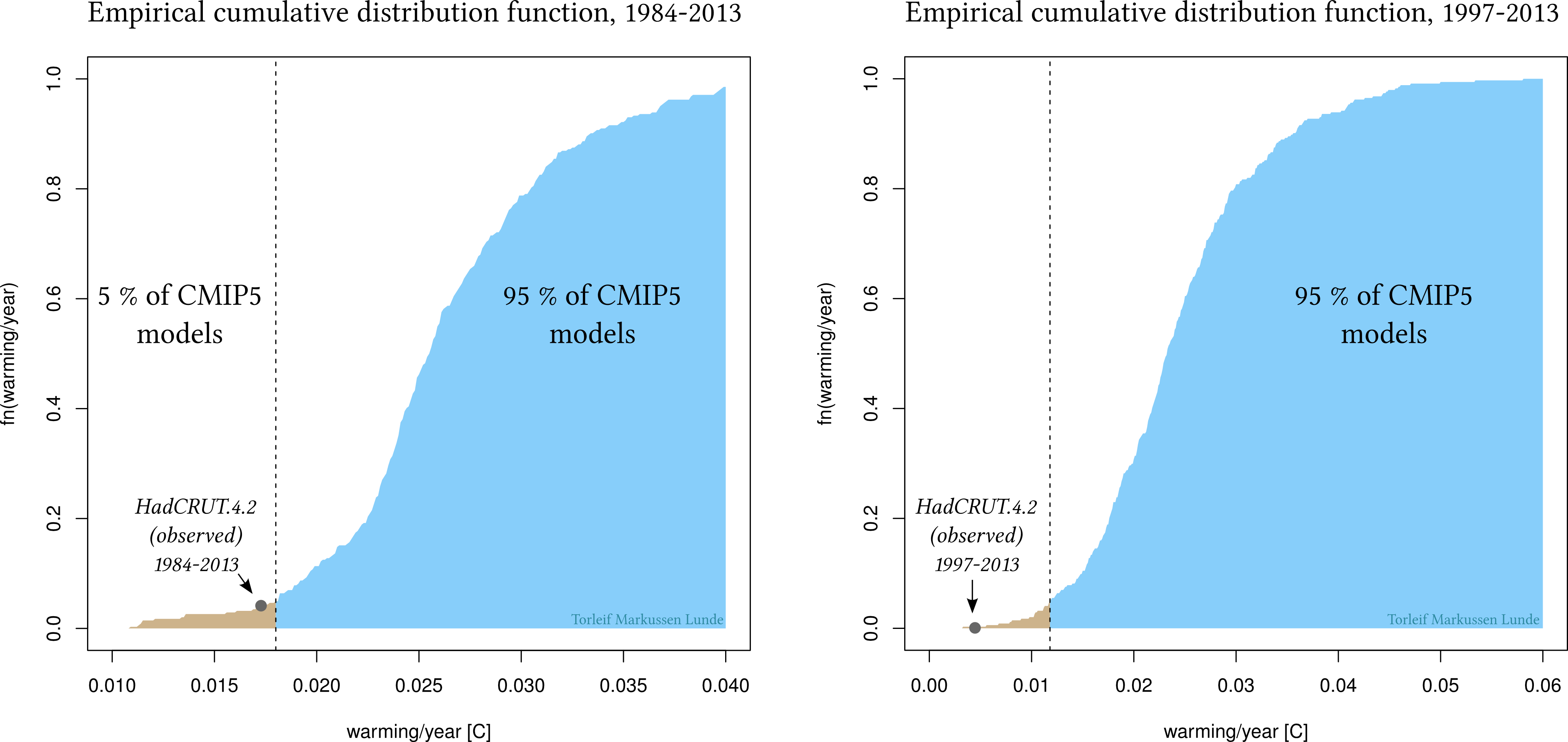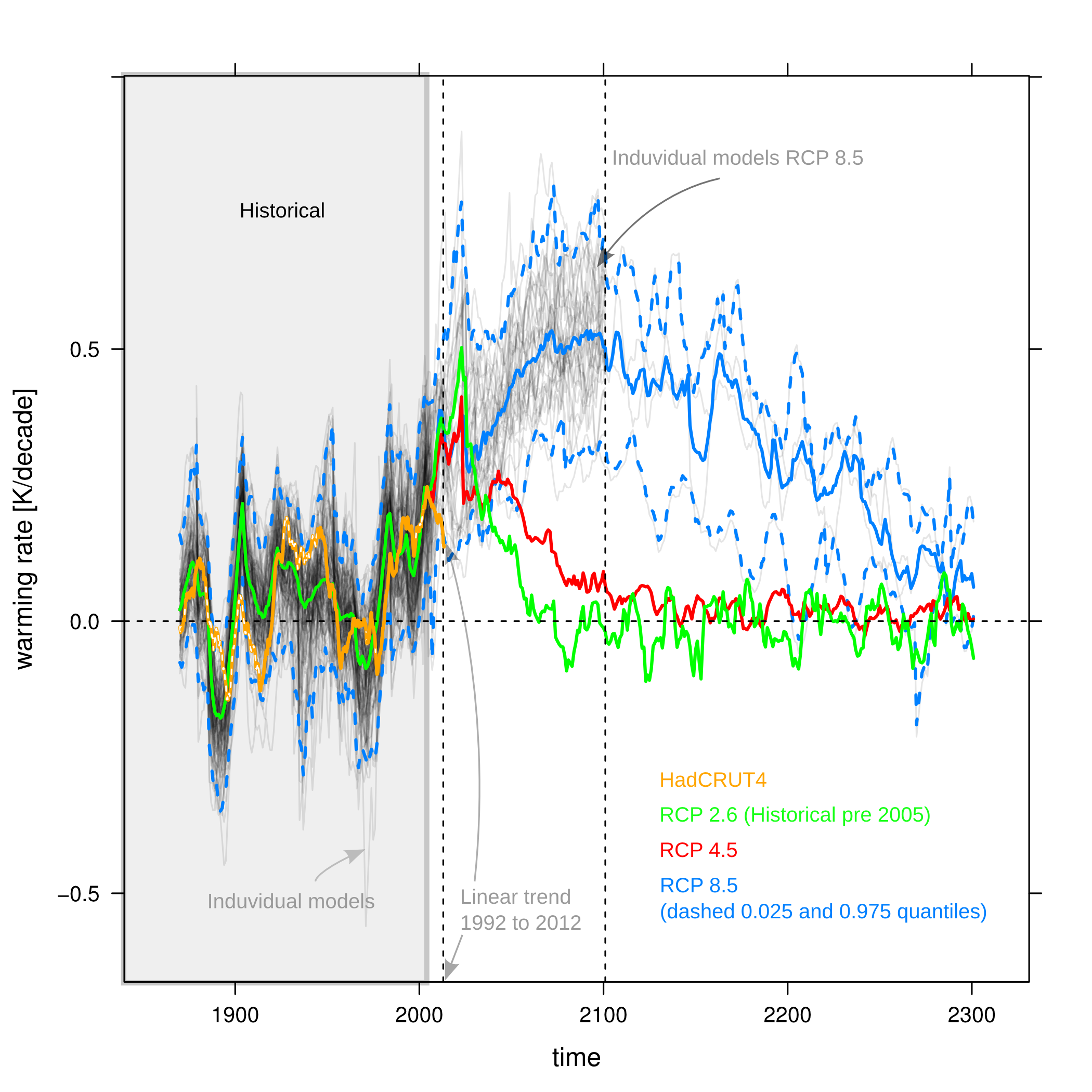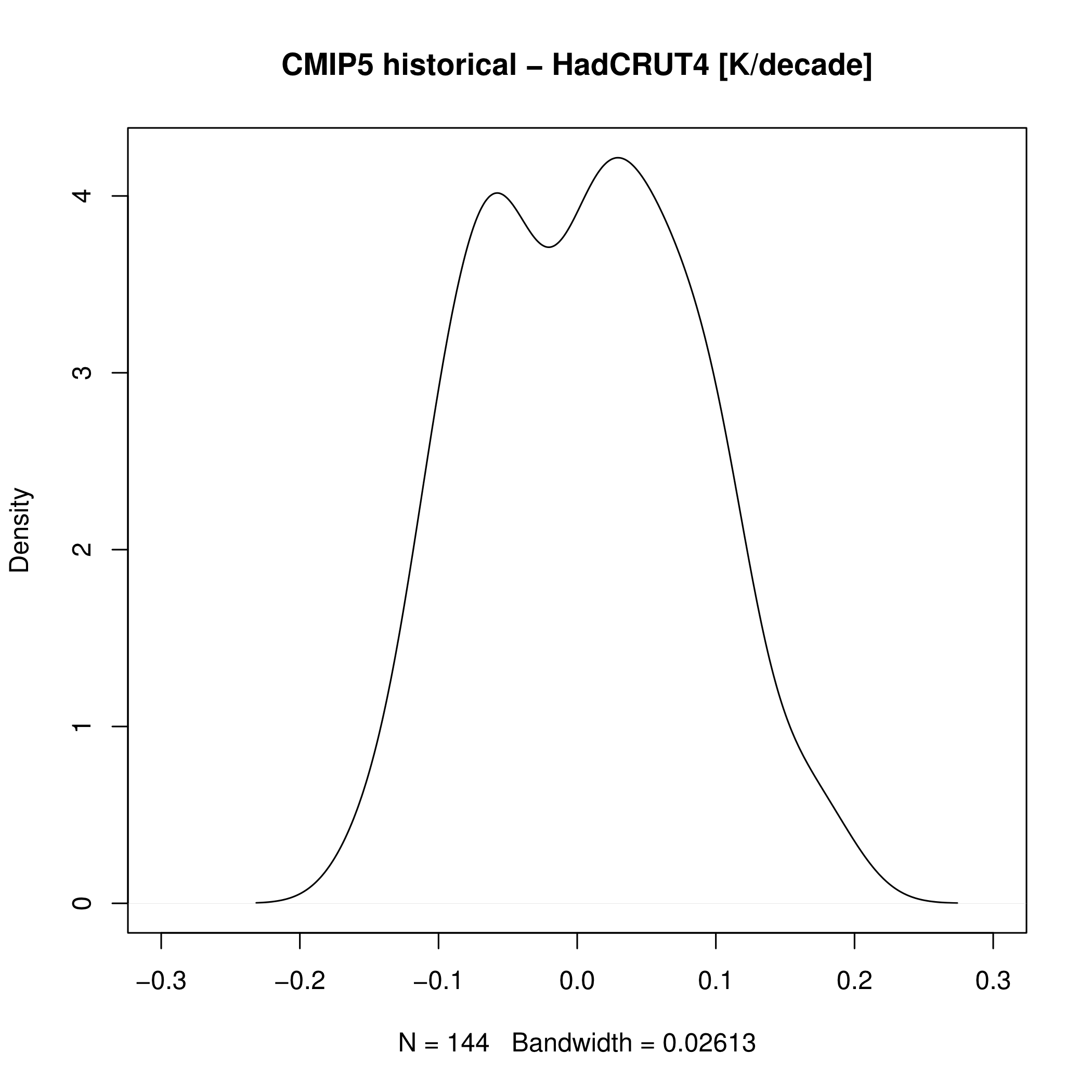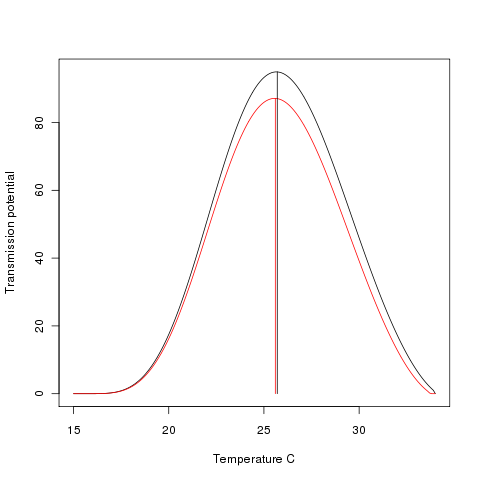Global warming is directly influencing humans through surface temperatures, but most heat uptake occurs in the ocean. It is therefore interesting how the ocean heat content has changed over time. In a recent article in Science Rosenthal et al. present a temperature record of western equatorial Pacific subsurface and intermediate water masses over the past 10,000 years that shows that heat content varied in step with both northern and southern high-latitude oceans. The findings support the view that the Holocene Thermal Maximum, the Medieval Warm Period, and the Little Ice Age were global events, and they provide a long-term perspective for evaluating the role of ocean heat content in various warming scenarios for the future. This result conflicts with the one of Pages 2k consortium in Nature Geoscience earlier this year where they state: “There were no globally synchronous multi-decadal warm or cold intervals that define a worldwide Medieval Warm Period or Little Ice Age”.
Tag: climate change

In the discussion about the rate the planet is warming it is tempting to pick single years, and say the models are not correct, you blotted your copybook, the planet is not heating as fast as models predicted, and it will probably not become as warm as the models say. At the moment, we have 20 year period where the median warming rate of 36 CMIP5 models is about 0.15 degrees Kelvin/decade higher than observed. Figure 1 is showing the real and modelled warming rate from 1870-2013, and the modelled up to 2300 using three of the RCP scenarios. It is evident the observed warming rate the last 20 years does not match the modelled ones.

So what do we expect? We do not expect the difference in warming rate to be zero all the time, but we expect that at some points in time the models will warm/cool the planet too fast, and sometimes too slow. Figure 2 shows the distribution of the difference in warming rate (CMIP5[median] – HadCRUT4), and a Shapiro-Wilk test of normality suggest we can not reject the data is not normally distributed. The figure shows that sometimes the models will warm/cool the planet too fast, and sometimes they will warm/cool it too slow, and “it is normal”. Anyway, the main message from the models should be clear; no cooling in sight. I also recommend reading this post about warming rates.

Climate and cherries
In a recent blog post at Climate Lab Book a recent press release by the World Meteorological Organisation (WMO) describing recent global temperature changes were discussed. Ed Hawkins makes a point about the definitions of a decade (from 2001-2010, 2000-2009, etc.) alters the conclusion of the report. He finds the largest change in temperature between decades is not to the most recent decade as claimed by WMO, but from 1987-1996 to the average of 1997-2006, at +0.24K.
The definition of a decade is cultural, and the result of such analysis clearly is dependent. To explore his ideas further, we define a decade as having 85 different starting and ending points, but all covering a period of 120 months. This means the last decade can be defined as 1996.05.16-2006.05.16, 1996.06.16-2006.06.16, …, 2003.05.16-2013.05.16. This will give us a distribution for each decade and hence limiting the issue of decade definition.
- Figure 1: Warming rate per decade
Figure 1 shows the warming rate between two decades, and it is evident the warming rate was greatest between 1990-2000 and 2000-2010. It is also evident the WMO statement “The decadal rate of increase in the global temperature accelerated between 1971 and 2010” is correct, but the picture is different if we expand the period to 1961 to 2010. The greatest change in warming rate happened from approximately the period (1970-1980/1960-1970) to (1980-1990/1970-1980), so I think we still see some cherry picking, with WMO and Climate Lab Book liking different cherries. Still, no doubt it is becoming warmer…
A couple of days ago I saw this tweet:
https://twitter.com/francetim/status/330978126211465216
I agree with Tim France, but with the short tweet he also assumes UK will be a rich country with a good health system in 100 years. Below are some thoughts on how we evaluate the impacts of climate change, following up a previous post.
Every time driving a car, there is a chance you will crash. In thunderstorms you might be hit by lightning, and at any time your home could be hit by a meteor. If you drive faster the consequences of a car crash is probably more severe; if you fill your pockets with iron and stand under a tree in a thunderstorm that might be a bad idea; we can increase or reduce the risk of something bad happening. For meteors, well, there is currently not much we can do. What all of these threats have in common is the low probability they will occur, but if they do the result might be devastating.
How are these risks related to malaria in the UK and climate change? The answer is probability. Malaria was common in the in Northern Europe including UK, Sweden and Finland 250-100 years ago, but is no longer a problem. While temperatures declined or showed no trend from about 1750 to the 1920s they have risen since, and we have seen no resurgence of malaria in Europe (except from small outbreaks).
Let us go back to the car. The risk, or probability, of serious injuries in a car crash is dependent on many factors. Increasing the speed will increase the risk, but how do we compare driving a car at 40 MPH without a seat belt to driving the a car at 50 MPH with a seatbelt? From 1750 to 2013 Europe got seat belts and air bags preventing malaria; better houses (less mosquito contact), improved health systems (shorter time to recovery), the population density increased (less mosquitoes per human), and land use changed (less breeding sites for mosquitoes). These factors allowed us to increase the air temperature without increasing the risk of malaria epidemics. So what about the future?
It is virtually certain temperatures will continue to increase the next 100 years. The temperature increase alone will potentially lead to more malaria. But the real impact? Do we assume UK has the same health system in 2100 as today? Will people live in even better houses? What if there is a war in 2080? The IPCC does not make assumptions or scenarios describing alternative realities (on national scales) on how societies will develop the next 100 years. To understand the possible real, and not only theoretical, impacts of climate change, we must also dare to speculate about how society will evolve over the next 100 years. Only then we can come closer to understanding the risk of increasing the speed from 40 to 50 MPH, and know under which assumptions we are making projections about impacts of climate change.
Yesterday an article by Lyons et al., “Stable and fluctuating temperature effects on the development rate and survival of two malaria vectors, Anopheles arabiensis and Anopheles funestus“, was published in Parasites & Vectors. This study is important to understand how climate change, changes in temperature between seasons, and from year-to-year influence the transmission of malaria. In this context it is interesting to see if the new data on Anopheles arabiensis alters the conclusion at which malaria is most efficiently transmitted. We refitted the egg-to-adult survival probability and mosquito development rate models described by Mordecai et al. with the data from the paper by Lyons et al., and calculated R0 according to temperature. While the old estimates for Anopheles gambiae s.s. suggested malaria is most efficiently transmitted at 25.6 C, the new data suggest malaria is most efficiently transmitted (by Anopheles arabiensis) at 25.7 C. The plot is showing transmission potential at the y-axis, and temperature in C at the x-axis. The red line is the estimate by Mordecai et al., while the black line is the estimate with the new data on Anopheles arabiensis.
Working on a malaria model, where one of the abilities is to evaluate the impact of climate change, I have twisted my brain to understand how we should evaluate the impacts of a warmer planet. Sea level rise, fair enough; low lying land might potentially become flooded; the nature of precipitation might influence energy production; ice free Arctic might allow ships to take a shorter route. How climate influence human and livestock health is a more complicated question, and I believe we need to make some assumptions to evaluate the consequences.
When assessing how climate might change in the future, climate modellers have made assumptions, and work from the thinking that if emissions of green house constitutes continue as today, the planet will become X degrees warmer. If we cut emissions today, the temperatures will only increase by Y degrees. To understand how human health is influenced by a changing climate my personal opinion is that impact modellers should adopt the thinking from the climate community, and develop standardized scenarios about population growth, how housing improves (or not), how health systems change, irrigation, … The scenarios needs to be structured on grids, like the climate models. By having this type of standardized scenarios, we will be able to estimate the uncertainty of the impact models, and potentially draw some conclusions about how climate influence human and animal populations.
The 2010 paper by Gething et al. is a good example of how real world projections might become wrong when the society develops along with climate change. A malaria model using a scenario suggesting Europe and the Americas improved housing and health systems would probably come up with the same results as they find in their paper, but very few models take such changes into consideration. This type of scenarios become even more relevant as it seems like we are moving towards adaptation, while emissions carry on like before.

